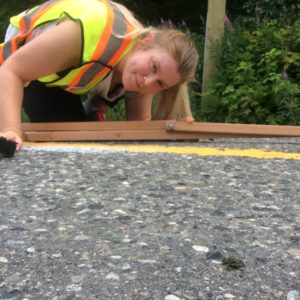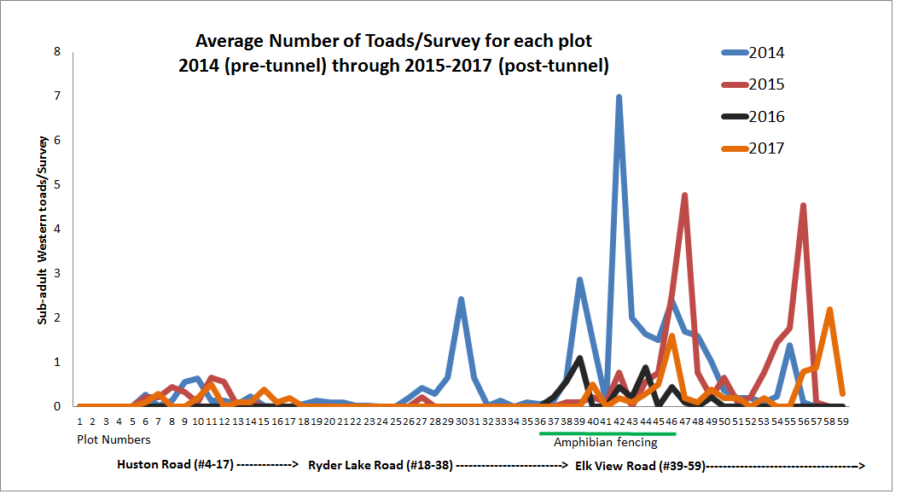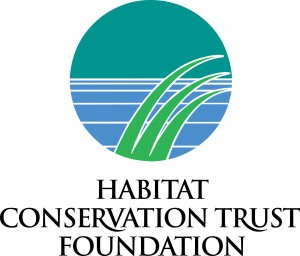As we previously posted, 2017 was an unusual migration year in terms of the routes the toadlets followed to cross the roads to get to the forest. However, nothing like a challenge to keep us learning and ready for anything!
It all started at the end of June…
We were closely monitoring the tadpoles in the wetland so we could anticipate when they would morph into young toads and start their annual migration across the fields and roads. However, at the beginning of July they seemed to disappear and we were unable to locate the tadpoles in the wetland anymore, even though we knew they hadn’t migrated yet. We looked for them along the shoreline and paddled around the accessible parts of the wetland, but no tadpoles were seen. Our resident volunteer toadlet monitor hadn’t seen them in their usual spots either. Then on July 14th we were contacted by surprised landowners who were seeing toadlets on the road on Elk View Road well above (south of) the safe passage area of the toad tunnel.
We are guessing that they had amassed in the shallow south end of the wetland where the heavy aquatic vegetation would have kept them hidden from view. So instead of crossing the hay field at the northern end, where we were waiting for them with the directional fencing and safe passage, they were on the road at the southern end of the wetland, where they were too far from the tunnel to benefit from its safe passage. This made the voluntary detour route more important than ever this year to mitigate the impact of vehicle traffic.
As the migration progressed the toadlets started using other routes as well. There were even toadlets crossing the detour route on Houston Road for several days. They also started using the tunnel and the culvert at the Elk View and Ryder Lake Road intersection; so, some of them were able to benefit from the fencing and tunnel after all. The only road they were not observed on this year was the small section of Ryder Lake Road along the northwestern edge of the breeding pond. There have been records of the toadlets using these other routes in the past, but not on a regular basis.
During the toadlet migration, our summer students helped us collect our road monitoring data, where they counted the live and dead toadlets within predetermined plots along the survey route.

The figure below summarizes the results.

This graph shows that there were similar numbers on Huston Road, where there is no safe crossing in place at this time. You can see that the plots along Ryder Lake Road support the observation that no toadlets were seen migrating across this section of road, unlike 2014 and 2015. Along the length of the green line, which indicates plots within the fencing and tunnel area on Elk View, there continues to be a reduction in numbers from the pre-tunnel hot-spot spikes observed in 2014. We continue to see spikes in the usual areas past the tunnel on Elk View: one right at the southern end of our fencing (which warrants further investigation); and, another one further south in an area that we know attracts the toadlets but the topography prevents us with coming up with a viable safe-crossing solution for this location. The large migration out the south end of the wetland was not captured as part of this graph as it was outside our survey area. This graph gives an idea of the migration trends over the years, however it is only a snapshot of road usage at any given time, absolute numbers require a different analysis.
That brings us to our toad tunnel camera data…
We use a wildlife camera to take pictures at set time intervals during the migration to try and get a better count of the numbers of toadlets that use the tunnel. This results in over 20,000 photos, of which each one is reviewed and all toadlets, and other creatures that crawled and scampered through the tunnel, are counted in each photo.

This is where our small army of volunteers help us sort through thousands of photos to diligently document tunnel usage. We want to send out a big “thank you!” to all these volunteers that make this data collection possible. In total, they counted 7,425 toadlets going through the tunnel, 54 frogs (red-legged and northern pacific tree frogs), and interestingly seven adult toads during the summer 2017 migration.
Given the circumstances, we are pleased that the tunnel was used by at least some of the toadlets. By comparison, in 2016 we counted more than 30,000 toadlets using the tunnel. The observation of the adult toads using the tunnel during the summer was new for 2017, which is encouraging and hopefully a trend that will continue.
This project is truly an example of a community pulling together to steward a species at risk. We are so grateful to our funders, partners, volunteers and Ryder Lake residents who help us save the toads!


